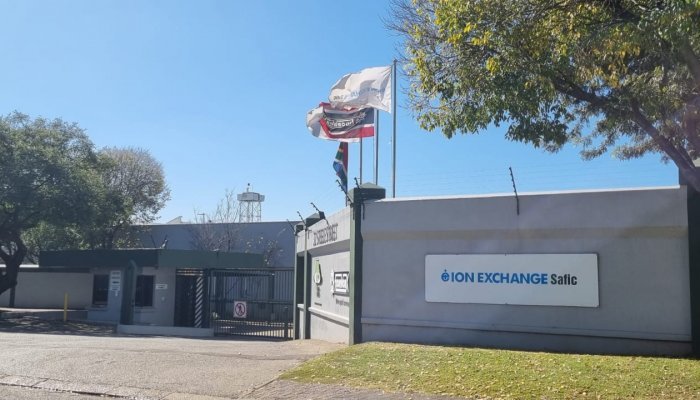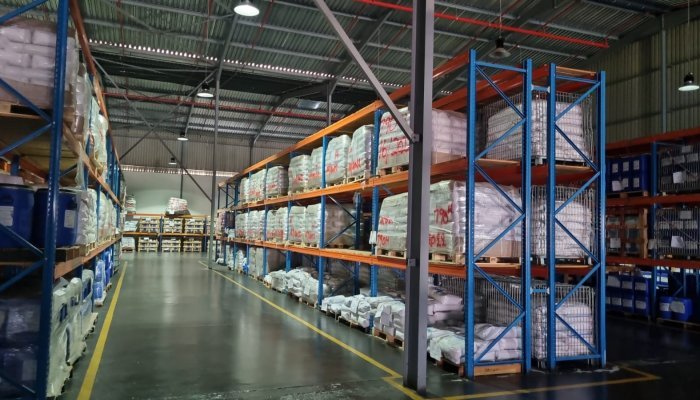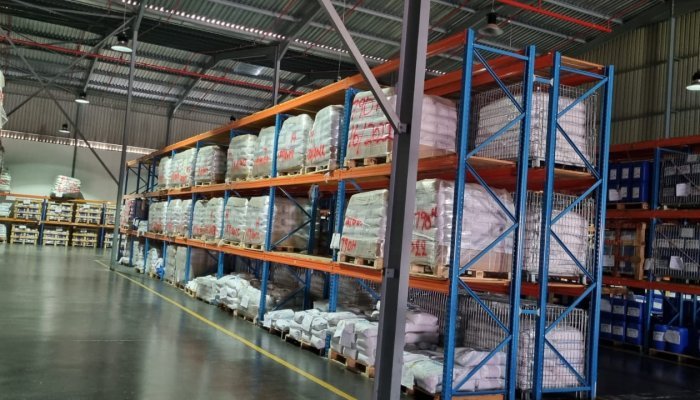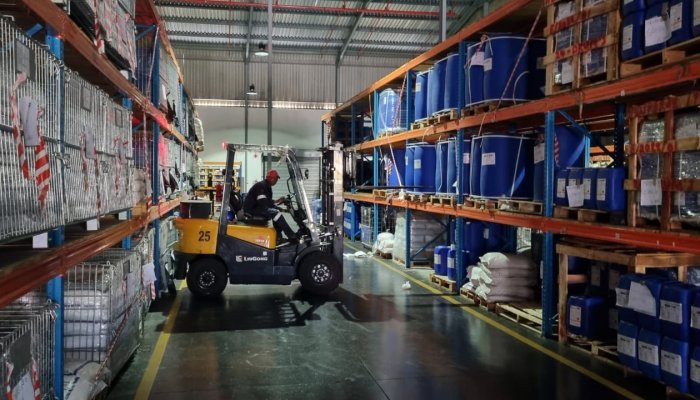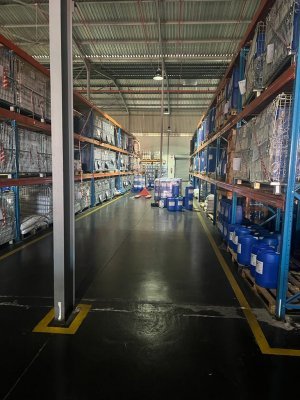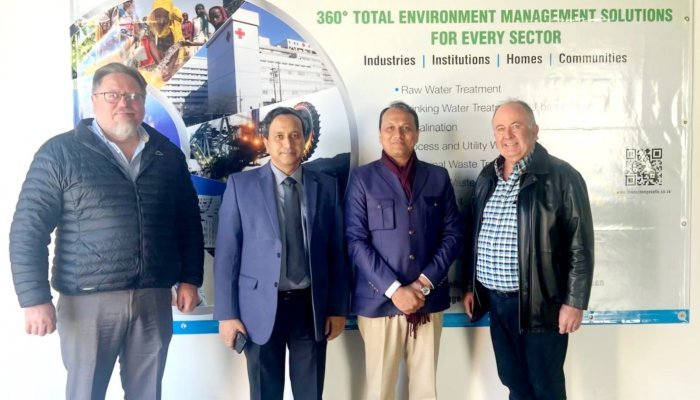In early 2024, President Cyril Ramaphosa affirmed the importance of infrastructure development to South Africa’s future. Yet, to close the infrastructure spending gap, Ramaphosa noted, “We need an additional R1.6 trillion in public sector infrastructure investment and a further R3.2 trillion from the private sector by 2030.”
The World Bank and Development Bank of Southern Africa’s (DBSA) estimates are higher. They anticipate that South Africa must spend R4.8 trillion to R6.2 trillion between 2022 and 2030. It is for this reason that partnerships are so important and why the DBSA and World Bank advise the development and refinement of mechanisms and incentives to “facilitate partnerships with the private sector to supplement public sector capacity”.
With South Africa enjoying closer trade and business ties with India, the potential for project tie-ups and collaborations with this key Brics+ partner is on the rise.
Prabhat Kumar, India’s High Commissioner to South Africa, believes Indian companies have a role to play in both hard physical infrastructure projects — including energy and water, ports, and railway lines — as well as mobile telephony. “We have a good track record of delivering quality infrastructure projects,” he says, adding that Indian technology is comparable to Chinese but is more affordable and “of better quality”.
Keen to partner
Indian companies are certainly open to partnerships and public-private projects. For instance, Sterling and Wilson Renewable Energy Limited, the global solar engineering, procurement, and construction provider, was commissioned in 2016 to complete the enormous 94.5MW De Aar 3 solar power plant in the Northern Cape. Working with Indian construction group Shapoorji Pallonji, the project was completed in a tight deadline of just 10 months. Shapoorji Pallonji entered the African market in 2009 and boasts projects across the African continent, in Guinea, Algeria, Rwanda, Zambia, Ghana, and South Africa.
De Aar 3 was Sterling and Wilson’s first major project in Africa, having entered the South African market just a year earlier, in 2015. Today, the company is behind solar installation projects in Nigeria, Morocco, Zambia, Namibia, Kenya, and Nigeria.
Veer Energy – which is part of Indian metals beneficiation group Alfeco Holdings – is also playing a part in the development of green energy projects across Africa. Certainly, Alfeco is putting its money where its mouth is as part of a broader strategic plan to become a net-zero company. Sachina Ahuja, CEO of Alfeco Holdings, explains that the group is targeting a 30% reduction in carbon footprint by 2030 and aims to transition into a “green electron generator with metals as a by-product”.
Founded in 2012, Alfeco currently operates four metals beneficiation facilities in South Africa across Johannesburg with consolidated power demand of 100MW. In April 2024 the group successfully acquired steel mills in Meyerton.
In support of Alfeco’s energy transition ambitions, Veer Energy has already secured the go-ahead to install rooftop solar projects across Alfeco’s various manufacturing plants. The maximum potential output from these combined installations will be 7MWp (megawatt peak). The combined project should be completed by April 2025 and engineering work is already underway.
Dharmendra Singh, the chief operating officer of Veer Energy, says the 7MW of rooftop solar will “be increased to 15MW by 2025 as newly acquired facilities by the group also implement rooftop solar plants”.
In addition to this project, Veer Energy also plans to build a 125MW solar farm in Gauteng to help power its manufacturing plants. According to Singh, “This PV [photovoltaic] project represents a significant component of our plan to achieve our 100% clean energy goal.”
The intention behind the project is to connect the planned 125MW solar facility to the national grid, so power generated can be transferred to Eskom and municipal power networks which, in turn, transmit the electricity to Alfeco Holdings’ manufacturing facilities across South Africa. When fully operational, the 125MW solar PV plant is expected to produce more than 280 000MWh a year. The company explains that it is “in the process of financial closure and selection of an engineering, procurement and construction (EPC) contractor to design and manage the procurement, construction, and commissioning”.
Water: The next frontier
While companies such as Veer Energy are stepping strongly into the renewable power space, another looming infrastructure concern is finally gaining attention in South Africa: water. Indian water and wastewater treatment company Ion Exchange Safic is ideally poised to make a significant difference in this critical sector.
“South Africa is one of the driest countries in the world, and as water resources gradually deplete, opportunities for recycling will grow,” says Ion Exchange Safic CEO Gourish Chakravorty. He notes that there is awareness in South Africa about water fragility, overuse, pollution, and contamination. “Water recycling could solve some of these problems.”
Chakravorty has been in the water business for more than three decades and has been based in South Africa since 2008, when he moved to establish the Ion Exchange India business in Africa. He soon realised that “collaboration with a local company was essential to drive successful business operations”. This led to the establishment of a joint venture with cleaning chemicals company Safic in 2012. Thus the Ion Exchange Safic partnership was born.
“This partnership has been in place for 12 years and it’s getting stronger and stronger,” says Chakravorty. “As I reflect on this relationship, which started as a greenfield without any prior history, I am grateful that Safic, through its foresight, recognised the strength of Ion Exchange and our technology. Its support through the years has been invaluable. Today, we are growing stronger together and achieving new heights.”
Sharing more specifics of the partnership, Chakravorty explains that the joint venture operates on a shared services model, encompassing human resources, finance, logistics, administration, and more. “This approach has delivered cost-effective and efficient services for both companies involved,” he says, adding that the local management team comprises both South African and Indian directors, “whose complementary skill sets and experiences contribute to a robust, dynamic, and sustainable operation”.
Over the years, Chakravorty is pleased to say that with technological advances, the cost of water treatment per cubic metre has decreased. “After recycling, one can expect the quality of the water to be much better than that of the raw water from the municipality. Ion Exchange Safic has the facilities to provide a complete water treatment solution, be it recycling wastewater from municipalities, mining, or tailored to suit niche industries like textiles. Our expertise includes decentralised solutions like containerised treatment plants and desalination, which is relatively new in South Africa but very common globally,” explains Chakravorty. He adds that these solutions have an important role to play in South Africa’s infrastructure mix, particularly as existing structures buckle from overuse.
“Only two people on our team, myself and a product manager, are from India. The rest of the team consists of local employees. We have access to a highly experienced resource pool of product specialists in India, as well as a technology division that supports us with design, engineering, and training. We have developed the capability to localise and train local manpower effectively. The level of support we receive is unparalleled,” says Chakravorty, who is also a registered professional natural scientist in South Africa, president of the India Club South Africa and a board member of the Confederation of Indian Industry’s India Business Forum South Africa (CIIIBF). Chakravorty also serves on the advisory board at the University of Pretoria’s faculty of engineering.
On a personal level, there is another compelling reason why companies like Ion Exchange Safic continue to invest time and attention in South Africa: it is a second home.
“I have been involved in driving the business for Ion Exchange India in many countries and I’ve travelled to more than 50 countries before I came to South Africa. Here I feel more at home than anywhere else,” says Chakravorty. There are so many synergies and opportunities to contribute and learn from each other. This is why giving back and developing skills and competencies locally is so important. After all, he says, “A balanced relationship is critical for long-term success, stability, and mutual growth.”
A boots-on-the-ground approach
Indian multinational conglomerate Larsen & Toubro (L&T) entered the African market in 2010 through a joint venture in South Africa with local company Befula Investments. Since then, L&T has expanded into 13 more African countries, undertaking multimillion-dollar projects in the power sector. The company continues to see a strong role for Indian firms in addressing Africa’s infrastructure deficits and driving development across the continent.
Speaking in 2020, L&T managing director SN Subrahmanyan observed, “Africa could be the next century’s economic growth engine…. We hope to be a part of the ecosystem of Africa. Make India proud and Africa proud.”
Subrahmanyan added that investing into the continent was “an absolute necessity, and it will come into play not only via physical infrastructure, including health centres, hospitals, better medical facilities, but also through digital health connect. L&T will do whatever required to develop the African continent.”
Gourish Chakravorty, CEO of Ion Exchange Safic, also steers a company that works across multiple countries in Africa, including South Africa, Zimbabwe, and Zambia. He believes having boots on the ground in Africa is important, noting that “you won’t fully grasp the country’s needs unless you are here”. As supply chains continue to face backlogs and port delays create challenges with bulk imports, Chakravorty sees greater scope to address both costs and availability through local supplies.
While Ion Exchange Safic currently holds a three-month stock of the chemicals imported from India in its 2 000m2 warehouses in Steeledale, Alberton, it also has “plans to manufacture chemicals used in bulk here [in South Africa] using blending facilities”.


